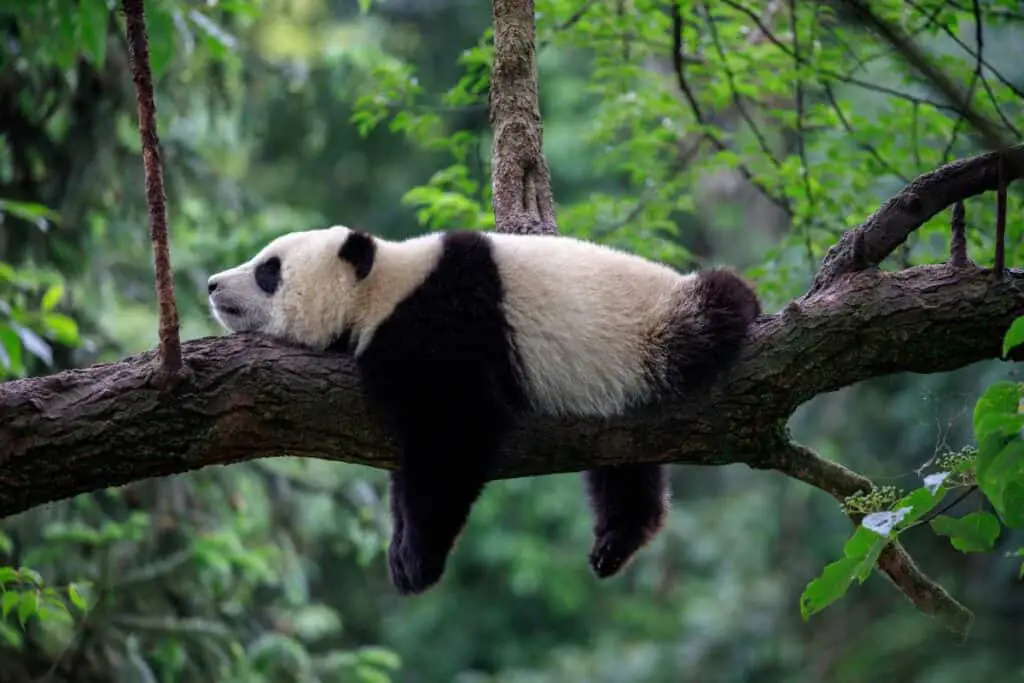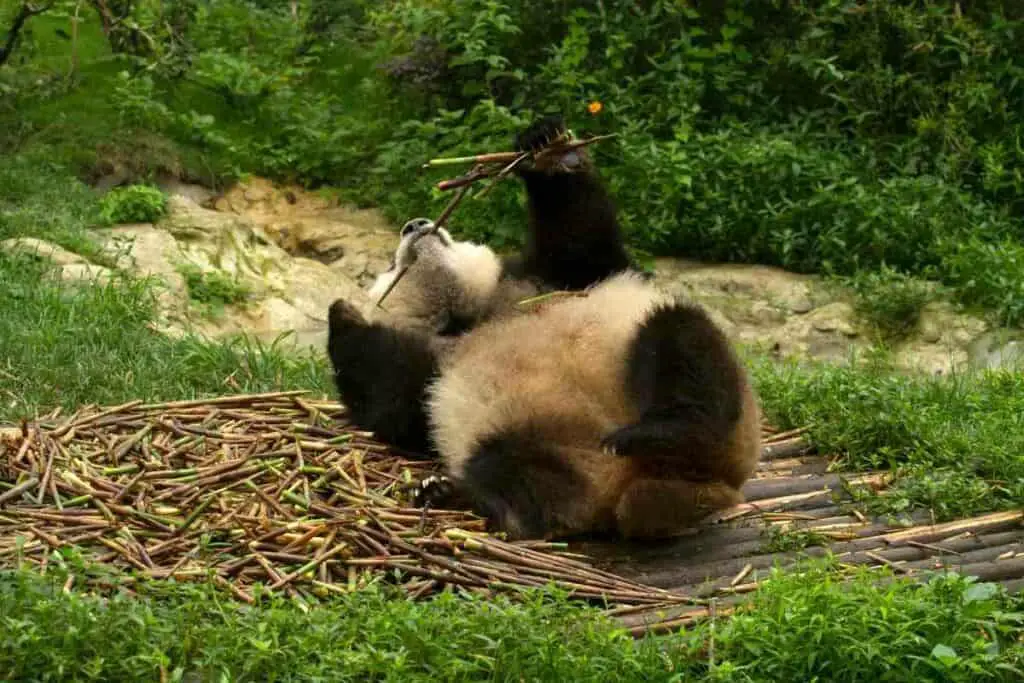The panda is a symbol of peacefulness and friendliness.
This explains why the discovery of over 40 wild pandas in Japan has left the country buzzing with excitement.

With China not allowing the bears to be brought in for breeding, Japan has taken it upon itself to ensure that these adorable creatures do not become extinct.
Here’s everything you need to know about their presence in Japan.
Table of Contents
Population and Distribution
Pandas are native to China and Nepal.
They were introduced to Japan during the Edo period (1603-1867).
The current population of the pandas is estimated to be 1,827 individuals across:
- Sichuan
- Gansu
- Shaanxi
- Guizhou Provinces
Some of the pandas, like the ones that were found in the mountains of Nagano, are found to be living in inaccessible areas and in patches of forest that aren’t connected to other panda populations.

The panda population is in decline due to the fact that it is an endangered species.
Habitat loss and a lack of food are the major threats to the continued existence of the panda in the wild.
Are you preparing for an exciting adventure to Japan? Visit our partner, Japan Objects Store, to find all the travel essentials you’ll need for your journey, from practical gear to authentic Japanese products.
Have pandas ever been native to japan?
Japan has a long and fascinating history with the pandas; it all started over 2000 years ago.
Back then, an emissary sent by Emperor Cheng of the Han Dynasty (206 BC – AD 220) was sent to Japan.
He brought back with him the first domesticated panda bear.
In the following centuries, many Chinese emperors maintained a panda bear as a companion.
However, the bears grew too large to be kept as companions and were often sent to Japan as gifts.
Though the panda-bear has been around in Japan for centuries, it was only in 1988 that the first wild pandas were spotted in the country.
The current situation, where over 40 wild pandas have been found in the mountains of Nagano, proves that panda bears were probably living there in the past but were not native to Japan.
Why Are There Pandas in Japan now?
Pandas are threatened animals mostly by mankind. But thankfully the population of wild pandas is now growing in numbers.
In the past 10 years, the population of pandas has grown by a whopping 41 percent. The reason for this is that China has imposed a ban on the import of panda bears.
Japan has stepped in to ensure that the panda bears don’t go extinct.
One of the reasons why there are pandas in Japan now is that the country has taken up the responsibility of ensuring that the panda bears are not just bred but also allowed to live freely.
Can Pandas Live Freely in Japan?
All of the efforts that have gone into conserving the species have now come to fruition.
The 40 pandas that were found in the mountains of Nagano are now living freely in the forests of the country.

These panda bears are protected by the Japanese government and are fed by the local forest rangers.
So, maybe they are not 100% wild and free. But it’s a far cry from zoo captivity so that’s a good thing.
The rangers make sure that the pandas are not disturbed and are fed a balanced diet that includes bamboo.
The government has made efforts to ensure that these bears are not disturbed in any manner. They have also made sure that there are no plans to develop the forests where the pandas live.
Panda Breeding Programme and Future Prospects
The panda breeding programme that is being undertaken in China and which has been for many years is also being replicated now in Japan.
In Fact – The first panda that was brought to the country from China was sent to the National Zoo in Ueno.
The breeding program will now be taken up at the Japanese breeding centre in Saitama Prefecture.
While the details of the program are yet to be made public, it is expected that the program will be similar to the one that is currently being run in China.

The panda breeding program is expected to help the panda population in the mainland to grow. However, it will do more than this.
With the pandas living freely in the forests, it will also help in the conservation of the endangered species.
It will also help in the training of the people who work in the field of conservation.
Oldest Panda bears in Japan
While the pandas are now found in the forests of Japan, some of the oldest panda bears are from China.
One of the oldest pandas is nearly 30 years old. This panda bear was captured in the Wolong Nature Reserve in China. It was found to be 27 years old.
The panda bear has been living in the reserve since it was captured from the wild. It is now kept as a pet in the Wolong Reserve.

Another panda bear that is nearly 30 years old has been living in the Sichuan Giant Panda Protection and Research Base since September 2000.
This panda bear was born in captivity and has been living in the base since it was captured from the wild.
Conclusion
In the future, we hope that more and more captive-bred Pandas will be released into the wild and the natural cycle of breeding will take over.
If we all play our part in ensuring these amazing creatures can live as freely as possible in Japan.
I hope someday that my children will be able to see the number of wild, free-roaming pandas increase significantly.
Japan seems to have embraced the idea of wild Pandas in their country and I for one will support the cause.
Read Next
- Best Japanese Knives Top Picks for Every Kitchen
- Japan’s Bold New Trend: Dressing Like a British Gentleman (or at Least Trying)
- 7 Best Japanese Sunscreen Products You Can Buy Online
- 5 Best Japanese Makeup Brushes for a Flawless Finish
- 7 Benefits Of Tatami Mats You Should Know
- The Best Furoshiki Wrapping Cloths: Inspiration, Ideas & Cloths You Can Buy









